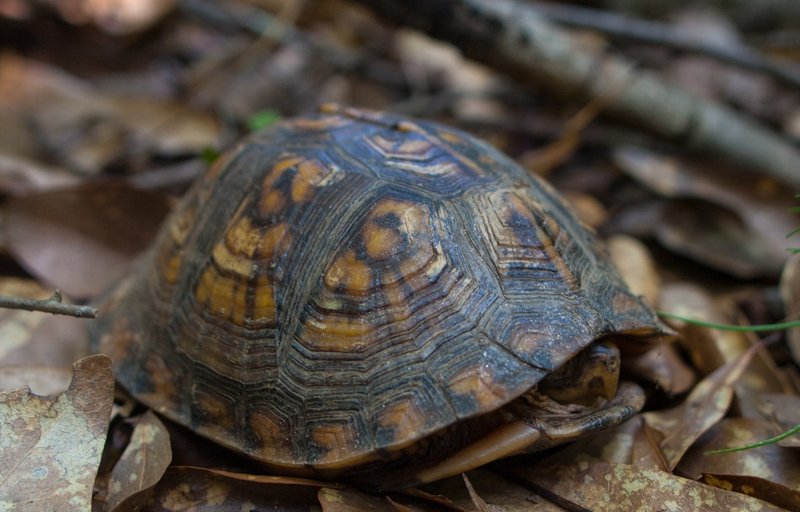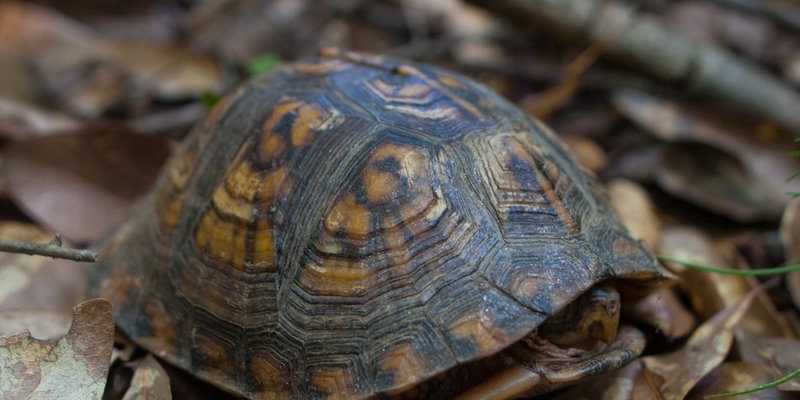
One key to the box turtle’s success is its shell. Think of it like a portable home that offers both shelter and defense. But that’s just the beginning. If you’re curious about what makes this little reptile so resilient, keep reading. We’ll dive into the unique features that help the box turtle not only survive but also adapt and thrive in various environments.
The Box Turtle’s Unique Shell
The box turtle’s shell is like a superhero’s armor. It serves as both a shield against predators and a cozy home base. This shell isn’t just any ordinary covering; it has two distinct parts that lock together, allowing the turtle to completely close itself off from threats. When danger approaches—whether it’s a hungry fox or a curious pet—the turtle can retreat into its shell and become nearly invisible.
Think about it this way: have you ever played hide-and-seek and found the best hiding spot? The box turtle takes that concept to the next level. By closing its shell, it becomes a hidden fortress, making it tough for predators to figure out what’s inside. This ability to withdraw not only protects the turtle but also allows it to endure tough weather conditions. When it gets too hot or too cold, the turtle can stay cozy and safe inside its shell until the climate is just right.
Adaptations for a Diverse Diet
You might be surprised to learn that box turtles are omnivores, which means they eat both plants and animals. This flexibility in their diet is crucial for survival. Imagine if you could only eat one type of food—now that would be tough! Box turtles munch on a variety of things, including fruits, vegetables, and even insects. This varied diet helps them adapt to different habitats.
Let’s say you’re in a dry area where there aren’t many plants. The box turtle has the knack for finding food that’s available, such as beetles or fallen fruit. This adaptability ensures that they can get the nutrients they need no matter where they live. It’s a real survival strategy—they’re like culinary adventurers, always searching for what’s tasty and available.
Slow and Steady Wins the Race
You’ve probably heard the saying, “slow and steady wins the race.” Well, that’s practically the box turtle’s motto! While they may not be the fastest critters around, this slowness is a clever survival tactic. By moving slowly, they reduce their energy expenditure, which is vital when food isn’t readily available.
Being slow also helps them avoid detection by predators. A quick dash may not always be the best option, especially if you’re tiny and tasty. Instead, their unhurried nature allows them to blend into their surroundings. When you see a box turtle gently navigating its environment, you might think of it as a small, confident explorer, taking its time to appreciate every step.
Longevity and Reproductive Strategies
Box turtles are known for their impressive lifespan, often living for several decades. This long life gives them the chance to reproduce multiple times. Here’s the thing: the more chances to mate and lay eggs means a higher likelihood that their genes will be passed down to the next generation.
But here’s where it gets interesting—box turtle mothers show a unique nesting behavior. They carefully select their nesting sites to ensure their eggs have the best chance of survival. This might mean choosing spots with the right temperature and moisture, which helps keep the eggs safe and healthy until they hatch. This thoughtful approach to parenting is a pretty smart adaptation in the wild.
Climate Adaptation and Behavior Changes
As you know, the environment isn’t always predictable. Box turtles have adapted to a range of climates and have found smart ways to cope with changing conditions. For instance, during extreme temperatures, box turtles can enter a state called brumation, which is similar to hibernation. This allows them to conserve energy and wait out unfavorable conditions.
You might wonder how they know when to brumate. Well, box turtles are tuned into their surroundings. They can sense changes in temperature and daylight, prompting them to find a cozy hiding spot to ride out the heat or cold. This behavior shows their remarkable ability to respond to environmental cues, adapting their lifestyles to ensure survival.
Understanding the Threats They Face
Even with all these clever adaptations, box turtles are not invincible. They face several threats that can impact their populations. Habitat loss due to urban development and agriculture is a major concern. Imagine if someone were to suddenly take away your favorite spots to hang out—yikes!
Additionally, road mortality is another significant danger. Box turtles often cross roads in search of food or mates, and they don’t always make it to the other side. This is where conservation efforts come in. By creating safer habitats and educating communities, we can help protect these charming reptiles from further decline.
Coexistence with Humans
It’s important to remember that humans play a big role in the future of box turtles. With their greatest threats stemming from our activities, it’s crucial to learn how we can coexist with these fascinating creatures. Simple actions, like being cautious while driving in areas they frequent or creating turtle-friendly gardens, can make a real difference.
You might even consider becoming an advocate for local wildlife. By participating in conservation programs or raising awareness, you can help spread the word about how we can protect the box turtle and its habitat. It’s all about working together to create a better world for these wonderful survivors.
In the end, the box turtle is truly a marvel of adaptation. With its sturdy shell, versatile diet, slow-and-steady approach, and smart reproductive strategies, it’s no wonder this little reptile has carved out a niche for itself in various habitats. Though challenges loom ahead, there’s hope. By understanding and supporting these remarkable creatures, we can ensure that box turtles continue to thrive for generations to come.

